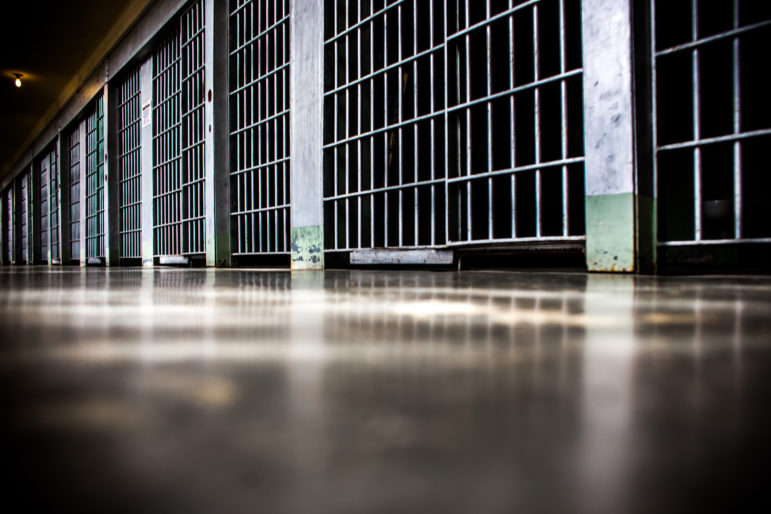
New York has a serious crime problem. By that I mean a problem figuring out what to do with people accused, and ultimately convicted, of committing serious crimes. And while people have different views of what constitutes a serious crime—with many maintaining that “serious” crime includes white-collar crimes that negatively impact thousands of people—I’m referring to a specific kind of serious crime: crimes of violence, including murder.
If charged with a serious crime, the odds are overwhelming that you will be held at Rikers Island. If convicted, you will be sentenced to a lengthy stint in state prison. Once eligible for parole, you will be repeatedly denied release regardless of any evidence of rehabilitation. The current wholly unsatisfactory answer to what to do with serious crime thus prevails. Mass incarceration remains the entrenched reality and will remain the answer until this cycle is broken.
If you visit any of the city’s arraignment courtrooms, the place where people accused of crime are first brought before a judge, you will regularly hear prosecutors ask judges to set bail because the accused is charged with a “serious crime.” And while the serious crime trope is invoked for many cases that few people would characterize as “serious,” there are cases, ranging from armed robbery to homicide, which most people would readily agree so qualify.
Although New York’s bail statute does not specifically permit judges to consider the seriousness of the crime when deciding the question of bail, the law requires judges to take into account the sentence which might be imposed if the accused is convicted. Serious crimes have long potential sentences and hence readily allow for judges to set high bail regardless of other indicia suggesting the accused has strong community ties and is not a flight risk. Add to the mix a judge’s fear of being pilloried in the press and the impact on prospects for reappointment if someone they release commits a new serious crime, and it is no surprise that high bail or remand is the likely result whenever someone is charged with a truly serious crime.
How does that pattern fit into the picture of the current bail reform movement? How does it harmonize with the recognition that Rikers Island is populated by pretrial detainees presumed innocent yet lacking the money to pay their bail? It doesn’t. While New York has seen the growth of supervised release and bail funds to post bail for those too poor to pay, these programs deliberately and explicitly steer clear of people charged with committing serious crimes. None of the extant bail reform programs can help an 18-year-old accused of Robbery in the First Degree who is held on $5,000 bail. The truth is that only a very small percentage of the people held at Rikers Island are facing misdemeanor charges.
The serious crime problem obviously extends to sentencing. Even many former prosecutors now acknowledge the devastation of mass incarceration. Yet serious crime begets serious sentences. Few argue that a murder conviction should not be followed by a term of incarceration, but, accepting for now the reality of prison, what does that mean in years?
Outdated Ideas About Violent Crime Hurt Victims and Trap Offenders

Most industrialized nations have 20-year maximum sentences. In New York, rather than a twenty-year maximum, there are almost 9,000 people serving sentences with a twenty-year minimum. Almost 3,000 people have already been locked up for at least twenty years. New York is one of only eight states where the proportion of prisoners serving life or “virtual life” (fifty years or more) sentences is at least one in five. Close to 10,000 people in New York prisons are serving life sentences or its functional equivalent, a number topped only in Texas, Louisiana, Florida and California. The explosion in the number of incarcerated people over the past several decades owes much to the ever-increasing length of sentences imposed.
And while the seriousness of the crime leads inexorably to high bail and long sentencing, the impact of the nature of the crime is felt most powerfully at the very back end of the system – when, if ever, will the person be released? As part of a clinical program at CUNY Law School I have met and worked with many people who were convicted of murder and sentenced to twenty-five to life, the maximum permissible sentence. Their stories are remarkably similar. They went to the Parole Board after having served their twenty-five year minimum. Even though they were legally eligible for parole and had served their time marked by profound evidence of remorse, transformation and rehabilitation, they were denied parole because of the seriousness of their crime.
Two years later they had their next regularly scheduled appearance before the Parole Board and they were again denied parole because of the seriousness of their crime. That should come as no surprise. If the seriousness of the crime is a basis to deny parole, what could possibly change in two years; their crime of conviction will never cease to be serious. And so it went every two years—parole appearance and parole denial due exclusively to the seriousness of their crime.
Much has been written about the serious problems that plague the Parole Board—how its members are selected, how little time is devoted to each person’s case, and racial disparities in release decisions. Yet even while all that can be changed, for many of those eligible for release the result of their hearing will remain a foregone conclusion as long as parole can be continually denied because of the seriousness of the crime. To be sure, the parole regulations provide that parole should not be granted if release would “so deprecate the seriousness of the crime so as to undermine respect for the law.” But would it deprecate the seriousness of the crime to release someone who accepted full responsibility for his actions, expressed genuine remorse, availed himself of every available program, had few if any disciplinary infractions, and who had already served several decades behind bars?
Watch:
Often these men were teenagers at the time of the crime and even the Supreme Court now recognizes that juveniles have less culpability than adults and have rehabilitation potential exceeding that of adults. Many of these men are now in their 50s, 60s and 70s. Several are in failing health. They have undeniably been punished, having been incarcerated for twenty, thirty, forty years or more.
There are alternatives to the punishment paradigm that fosters and defines mass incarceration. Restorative justice has gained recognition as an effective way to hold people accountable for the harm they caused and to ensure that victims’ voices are heard even in cases of violent crime. New York should embrace the United Nations Human Rights Council’s human-rights based approach to mass incarceration focused on rehabilitation instead of punishment. There is a growing recognition that mass incarceration threatens public health and requires a public health, rather than retributive, response. More specifically, the American Law Institute recently approved a new draft of the Model Penal Code to provide every prisoner an opportunity for a judicial “second look” at their sentence after fifteen years, no matter how long their original sentence.
Mass incarceration is not just about unnecessarily incarcerating masses of people. It is about unnecessarily keeping masses of people in prison for decades. Undoing the damage done will require earnest, bold, and yes, serious, leadership.
Steven Zeidman is a professor at CUNY School of Law and member of the Board of Directors of Prisoners’ Legal Services and the Parole Preparation Project.









3 thoughts on “CityViews: New York City’s ‘Serious’ Crime Problem”
Convicted murderers should receive Life without parole.
Pingback: CityViews: New York Metropolis's 'Critical' Crime Drawback - Metropolis Limits - NYC Breaking News
Pingback: RJ coming of age?